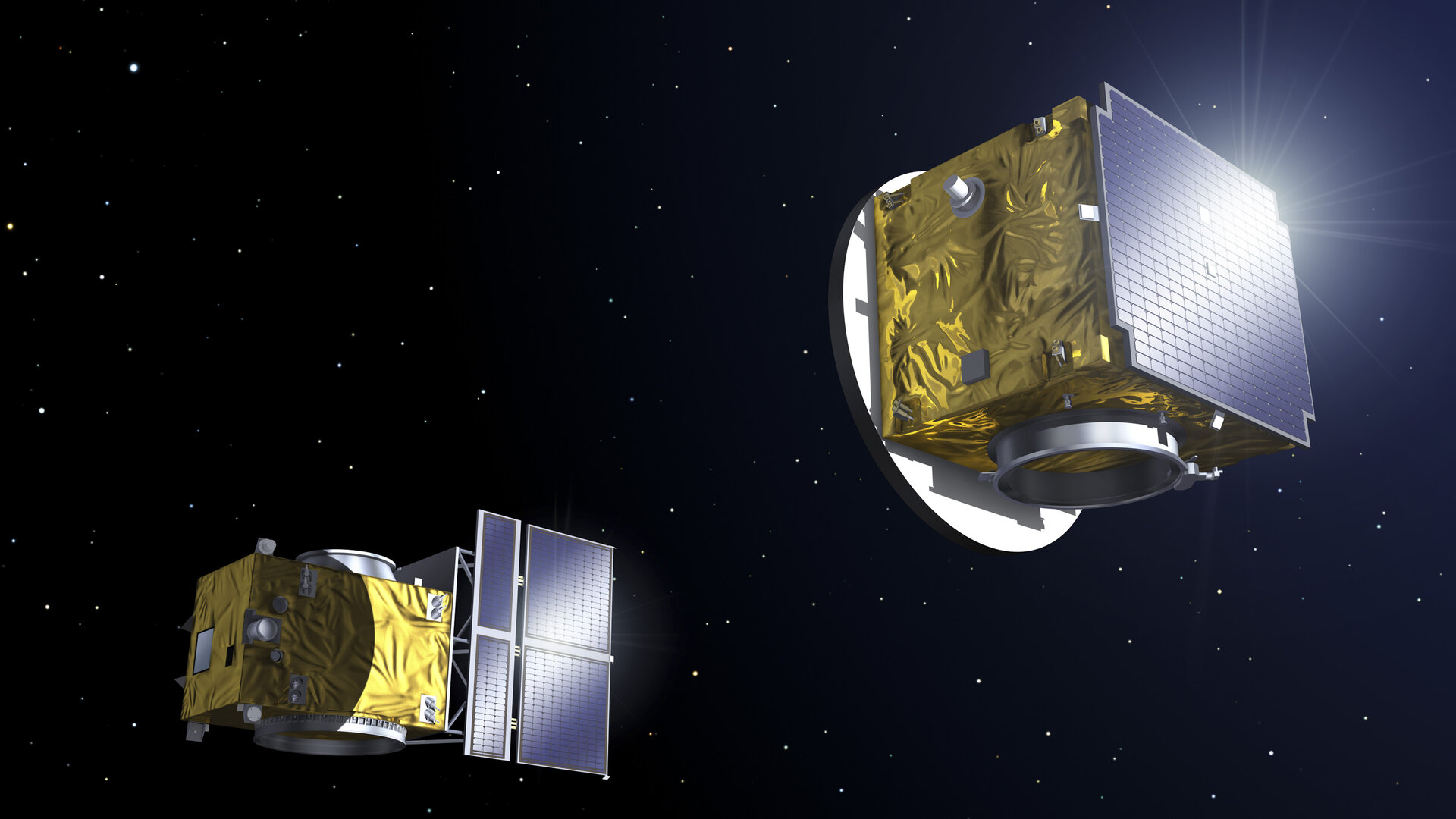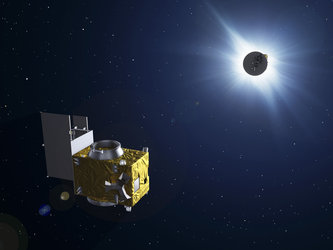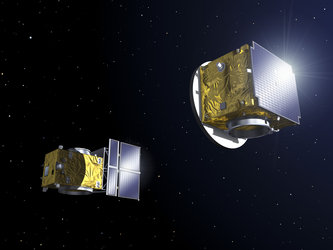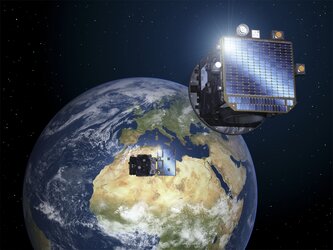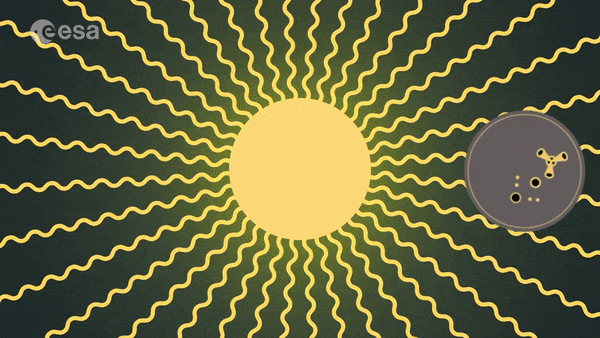Proba-3 Technologies
A broad range of novel technologies are essential to make Proba-3 a success. The mission’s formation flying system includes components in both satellites, with a Formation Flying Management system being in charge of scheduling and planning formation flying activities.
The satellites employ various methods to determine their relative positions. First of all, inter-satellite RF links are maintained via an S-band system between the two spacecraft. Around perigee, GNSS receivers acquire GPS signals and a dedicated relative navigation algorithm will provide the relative position of the satellites. Because the satellites' orbit carries them above the altitude of the GPS constellation, relative GPS is only used during the lower segment of their orbit.
For fine measurements during closer separations of less than 250 metres, this relative GPS system is supplemented by a visual-based sensor. A set of cameras on the Occulter Spacecraft image and detect LEDs mounted on the Coronagraph spacecraft. By processing the centroid of the images, it can return the relative pose-position solution to the on-board navigation. This system has been designed to be robust to straylight such as the reflection of the Sun on the large solar array or on the Earth.
Next in sequence, the Fine Lateral and Longitudinal Sensor on Proba-3’s Occulter spacecraft shines a laser towards a corner cube retro-reflector on the face of the Coronagraph spacecraft, which is reflected back in turn to the Occulter. This FLLS provides relative positioning down to millimetre accuracy.
The final positioning technology is the Shadow Positioning Sensor system, based on photo detectors arranged around the lens that Proba-3’s main coronagraph instrument will use to monitor the Sun’s surrounding corona. If the approximately 8-cm diameter shadow is cast correctly, centred onto the Coronagraph, then it should be equal in illumination on all sides; any discrepancy triggers a correction.
Star trackers will be used for absolute attitude determination. The high precision requirements demand the co-location of all the star trackers and fine metrology sensors and instrument on an optical bench.
Precision cold gas thrusters – working at 10 millinewton scale – will be placed aboard the Occulter spacecraft to precisely maintain the relative positions of the two satellites.
The Coronagraph satellite will incorporate a one-newton scale monopropellant propulsion system for perigee passage manoeuvres and collision avoidance manoeuvres.
Proba stands for the ‘PRoject for OnBoard Autonomy’ and the decision has been taken to make an expanded use of autonomous on-board control procedures for this mission. The majority of formation flying experiments will take place on an automated and autonomous basis.















 Germany
Germany
 Austria
Austria
 Belgium
Belgium
 Denmark
Denmark
 Spain
Spain
 Estonia
Estonia
 Finland
Finland
 France
France
 Greece
Greece
 Hungary
Hungary
 Ireland
Ireland
 Italy
Italy
 Luxembourg
Luxembourg
 Norway
Norway
 The Netherlands
The Netherlands
 Poland
Poland
 Portugal
Portugal
 Czechia
Czechia
 Romania
Romania
 United Kingdom
United Kingdom
 Slovenia
Slovenia
 Sweden
Sweden
 Switzerland
Switzerland


























